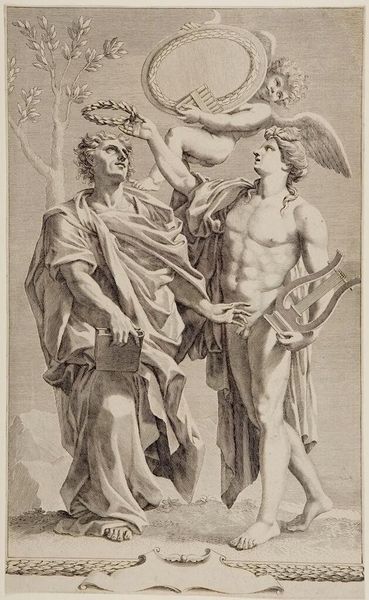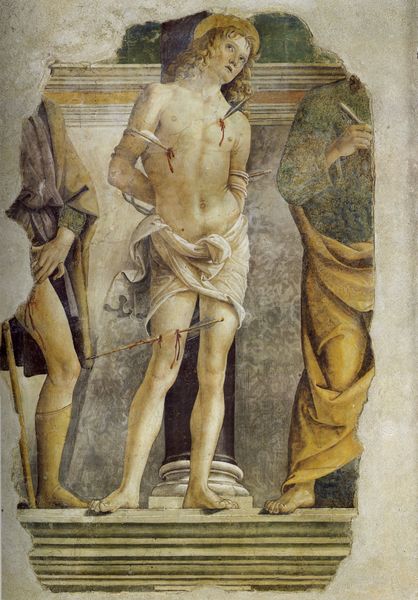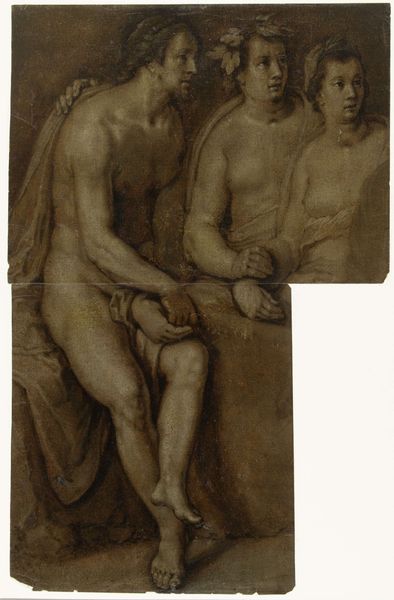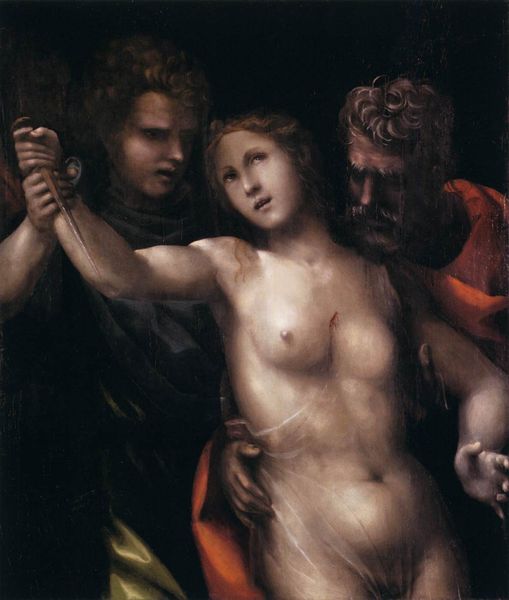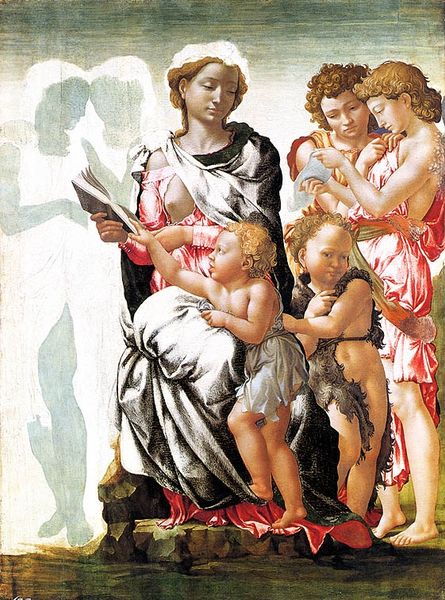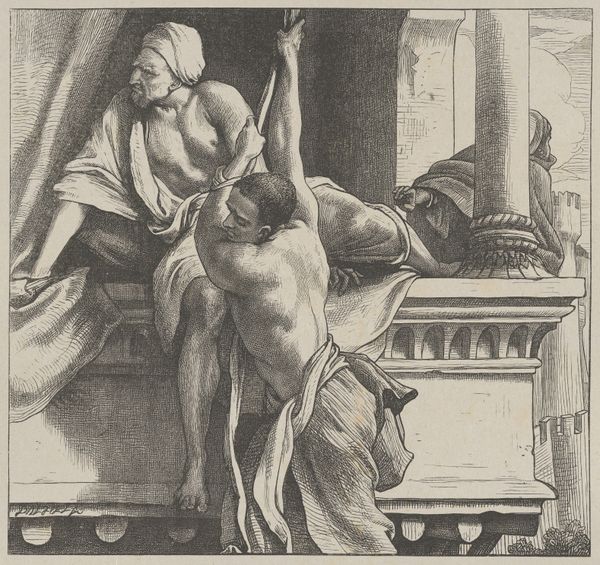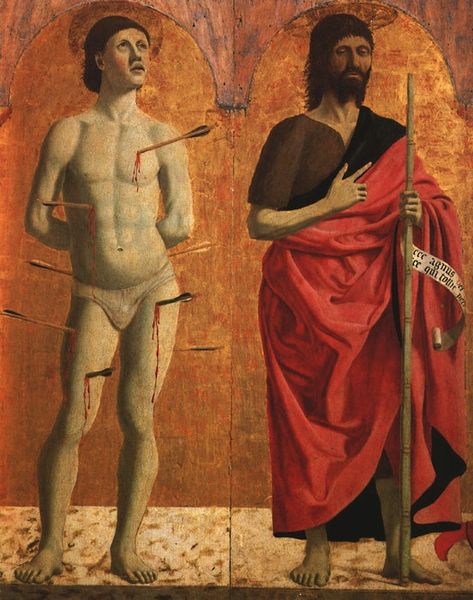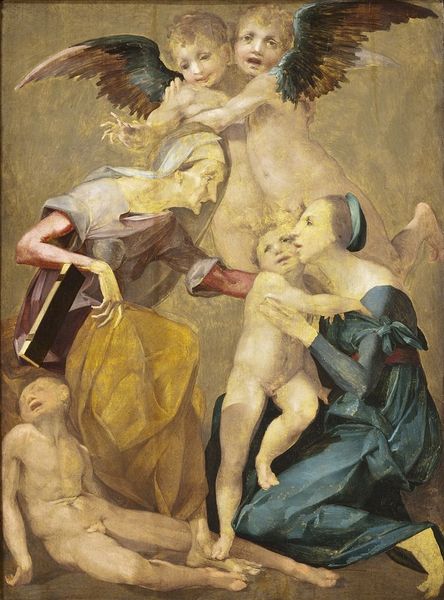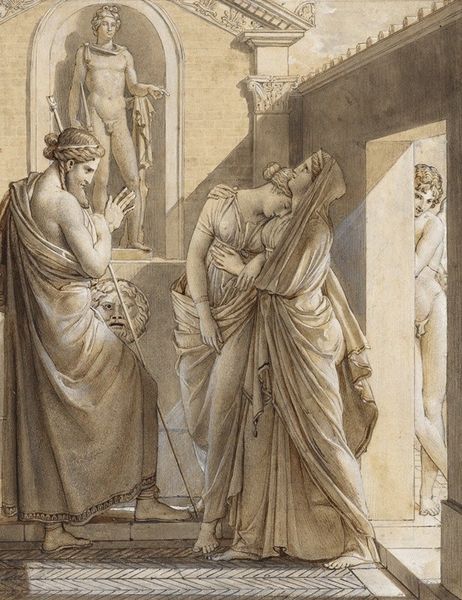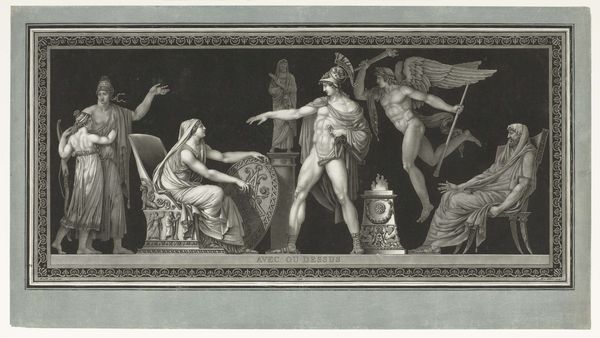
drawing, oil-paint, fresco, ink, pencil, mural
#
portrait
#
drawing
#
medieval
#
oil-paint
#
charcoal drawing
#
figuration
#
fresco
#
charcoal art
#
oil painting
#
ink
#
pencil
#
mythology
#
line
#
symbolism
#
history-painting
#
academic-art
#
mural
Copyright: Public Domain: Artvee
Edward Burne-Jones created "The Wheel of Fortune" during the late 19th century in Britain. The image depicts the Roman goddess Fortuna turning the wheel of fate, elevating some figures while casting others down, reflecting on the capricious nature of life. This work is indicative of the broader artistic and intellectual currents of the time. As part of the Pre-Raphaelite movement, Burne-Jones turned to mythic and medieval subjects as a way of critiquing what he viewed as the ugliness of the industrial present. The social structure of Victorian England, marked by stark class divisions, informs the painting's commentary on the unpredictable nature of success and failure. The institutional structures of the art world itself also played a role, with artists seeking patronage and recognition within established academies and galleries. The Wheel of Fortune thus speaks to the late-Victorian fascination with fate and fortune. By studying the journals and letters of Burne-Jones, we gain a clearer understanding of the painting as a product of its time.
Comments
No comments
Be the first to comment and join the conversation on the ultimate creative platform.
